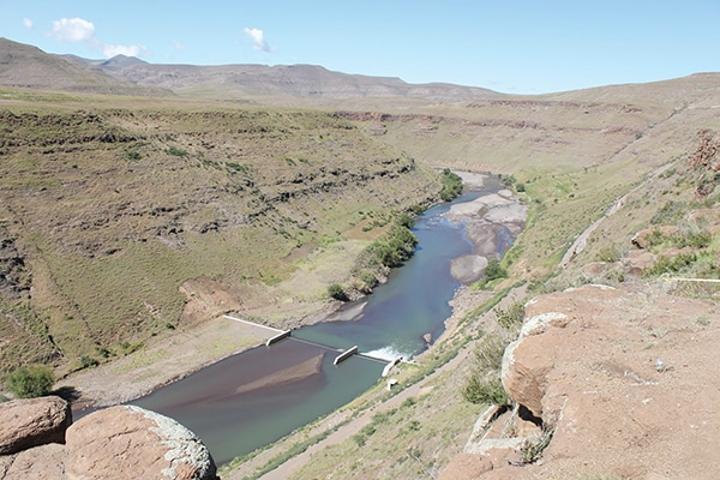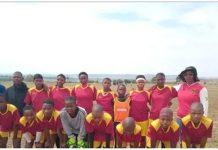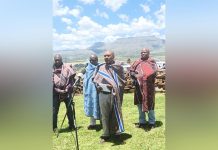Africa-Press – Lesotho. Lesotho and South Africa have agreed to overhaul the 1986 treaty for the transfer of water to Gauteng. South Africa’s portfolio committee on human settlement, water and sanitation and the natural resources cluster committee of the South African and Lesotho parliaments both want the treaty on the Lesotho Highlands Water Project between the two countries to reviewed in its entirety.
LHWP is a multibillion-dollar, multi-dam water project developed in partnership between the governments of Lesotho and South Africa, and signed into life in 1986.
Through the project, Lesotho transfers water from the highlands to the Gauteng industrial hub of South Africa via the Vaal River System while simultaneously generating hydro-electricity for Lesotho. The project is considered Africa’s largest water transfer scheme so far.
“The meeting recommended that the Treaty between Lesotho and South Africa needs to be reviewed in its entirety as the 2011 amendment only focused on Phase 2 of the project and does not cater for the current state of affairs in both countries,” said South Africa’s portfolio committee chairperson, Machwene Semenya, in a statement this week.
The committee statement added: “Above all, the joint committees concurred that the LHWP is too important to fail. ” The statement followed the portfolio committee’s week-long oversight visit to Lesotho where it toured the LHWP.
Semenya’s remarks that Lesotho and South Africa’s parliament portfolio committees had agreed to have the LHWP treaty reviewed in its entirety were applauded by Lenka Thamae, national coordinator of the Survivors of Lesotho Dams (SOLD).
“We are happy that the two portfolio committees have agreed that the treaty should be reviewed.
That is what we have always wanted as SOLD and we want to be part of Lesotho’s technical team that will work with South Africa to review the treaty,” Thamae told Public Eye Thursday.
However, Thamae said his organization hopes to see greater involvement of non-state actors and not just leave the potentially contentious issue to governments alone.
“The Survivors of Lesotho Dams has massive experience of monitoring the Lesotho Highlands Water Project; we specialise with the Lesotho Highlands Water Project Treaty.
Therefore, we want to be included in the ‘technical’ team of review of the Treaty. A non-state actor perspective should be included in the review; it should not only be the business of government to do so,” Thamae added.
SOLD is an ecumenical, non-profit making and non-governmental organisation that works for justice, good governance, and inclusiveness and participation in decisions that affect communities displaced by dams and other large infrastructure developments in Lesotho.
Semenya said the purpose of the oversight visit to Lesotho was to assess progress on the project, challenges and strengthen oversight over the project, “and also meet the Lesotho committee responsible for water”.
“The committee felt it was necessary for its oversight work to visit Lesotho and assess progress, especially considering the economic importance of the project to the sustainability of Gauteng, which is our country’s economic hub and seat of the executive,” she said.
As part of its programme, Semenya said the committee met with the Natural Resources Cluster Committee of the National Assembly of Lesotho, where they focused on oversight of the LHWP and its benefits to both countries.
“The committees agreed on a collaborative oversight effort over the project to ensure the maximisation of benefits of the project for both countries, and also to share knowledge and learn from each other going forward,” read the statement.
An estimated 2,300 households will be affected by the implementation of Phase II and approximately 342 households will have to be relocated for project developments.
An African Development Bank Group resettlement action plan summary for LHWP Phase II shows that an estimated 1,200 hectares of arable land will be permanently acquired, mainly for reservoir establishment and inundation.
The document, published in March 2019, shows that loss of this arable and rangeland in the lower lying valleys of the Polihali Basin will have a critical impact on the area as land is in short supply and generally degraded. In 1986, the same year the LHWP treaty was signed, a military coup overthrew the government of Lesotho led by Prime Minister Leabua Jonathan.
At that time, South Africa was ruled by the apartheid regime, and the apartheid government’s previous negotiations with Jonathan on a water treaty had been unsuccessful in part due to Jonathan’s government unwillingness to associate itself with the apartheid government.
It is widely believed South Africa backed the military coup in part to negotiate its way to the treaty that would become the LHWP. In this way, the LHWP was founded upon an agreement between two undemocratic states, and these circumstances, many observers have said, led to Lesotho getting a raw deal when it signed the treaty.
Research by one Clive Vinti, investigated how the treaty enabled South Africa to take over Lesotho’s water resources. Vinti described this phenomenon as ‘hydrocolonisation’.
“The term describes the unlawful appropriation and control of water resources of a certain group or community,” he said.
“In the agreement, Lesotho has to supply South Africa with predetermined amounts of water. There can be no deviation in the agreement of the provision of water. You cannot impair the terms of the contract,” he also said.
In September 2018, Public Eye reported that Lesotho earns sixty-four lisente, on average, per a thousand litres of raw water it transfers to South Africa.
According to the LHDA comprehensive water sales report for the period from November 1996 to July 2019, Lesotho made a revenue of M9 949 916 036 from selling 15,453.20 million cubic metres of water to South Africa.
The LHDA water sales report, published on the LHDA website, further revealed that Lesotho received about M936 million in royalties from exporting some 779 million cubic metres of water to South Africa in 2018.
In 2017, some 779 million cubic metres of water were transferred to South Africa and Lesotho received about M903 million in royalties. In 2016, a M837 million revenue was made from the sale of 779 million cubic metres.
In January 2019, then Prime Minister Thomas Thabane told members of his party All Basotho Convention (ABC) during an open rally at Ha Abia in Maseru that despite the fact that he was a prime minister, he did not know where money from the LHWP was going to.
Thabane has previously reiterated at different fora that Lesotho was not getting as much benefit as it should from the water it sells to South Africa.
The highlands water project has also been hugely criticised by some Basotho who believe the agreement is skewed towards the benefit of South Africa while Lesotho is just a tank that stores water for its rich neighbour without benefitting much.
South Africa’s portfolio committee also indicated that during its visit to Lesotho, it received briefings from the South African High Commission in Lesotho, LHDA and the Lesotho Highlands Water Commission (LHWC), formerly the Joint Permanent Technical Commission.
Established by the 1986 treaty, LHWC is composed of two delegations, one from each party to the treaty. The two delegations, each made up of three representatives, are independent and report directly to their respective governments.
“It (committee) also visited Katse and Polihali (under construction) dams and the Muela Hydropower Plant.
The committee was impressed with the quality of the dam and associated structures and the overall management and operations of the LHWP,” Semenya said. Despite the success of the LHWP, the committee said it identified various challenges needing urgent attention from both countries.
It said these included compensation of resettled communities; capacity-building and skills transfer between the two countries; and funding of the project.
“Nevertheless, the project implementers assured the delegation that these challenges are not insurmountable with plans already in place to arrest them.
The committee has emphasised the need to speed up implementation of Phase 2 of the project to ensure that both countries explore maximum benefits from the project,” Semenya said.
“The committee resolved that it would assist by collaborating with its Lesotho counterparts on conducting oversight and amending laws, and advocating for improved funding allocations where necessary,” she added.
The treaty also established parastatal authorities whose responsibilities included general supervision of the project as well as implementation of compensation and resettlement programmes, which are; the Lesotho Highlands Development Authority (LHDA) for Lesotho, and the Trans-Calderon Tunnel Authority (TCTA) for South Africa.
LHDA is responsible for the project’s overall implementation works such as dams, tunnels, power stations and infrastructure on Lesotho’s borders. It reports to LHWC.
TCTA is responsible for tunneling, delivery, integration and flow control of water into the Ash River outfall in South African territory. Further details of the treaty include five planned project phases to be carried out over a thirty-year period, with an immediate focus on Phase I. Currently, only Phase I of the project has been completed.
Phase IA completed in 1998, consisted mainly of the construction of the Katse Dam on the Malibamatšo River, a 45km transfer tunnel from Katse Dam to ’Muela reservoir which is considered to be the tail pond, the ’Muela hydropower station and a 37km delivery tunnel stemming from the ’Muela reservoir to the outfall at the Ash River from where water flows to the Vaal Dam.
Phase IB was completed in 2003 and inaugurated in 2004. It consisted mainly of the construction of Mohale Dam located on the Senqunyane River, a 32km transfer tunnel linking Mohale and Katse dams allowing water to flow in either direction, and keeping each dam at optimum operating level.
The official ground-breaking function for Phase II took place in November 2019. Phase II entails the construction of the Polihali Dam; a transfer tunnel from Polihali Dam to Katse reservoir; as well as advance infrastructure, environmental and social development programmes in Lesotho.
When complete, it will increase the current supply rate of 780-million cubic metres a year incrementally to more than 1,270 million cubic metres a year.
For More News And Analysis About Lesotho Follow Africa-Press






